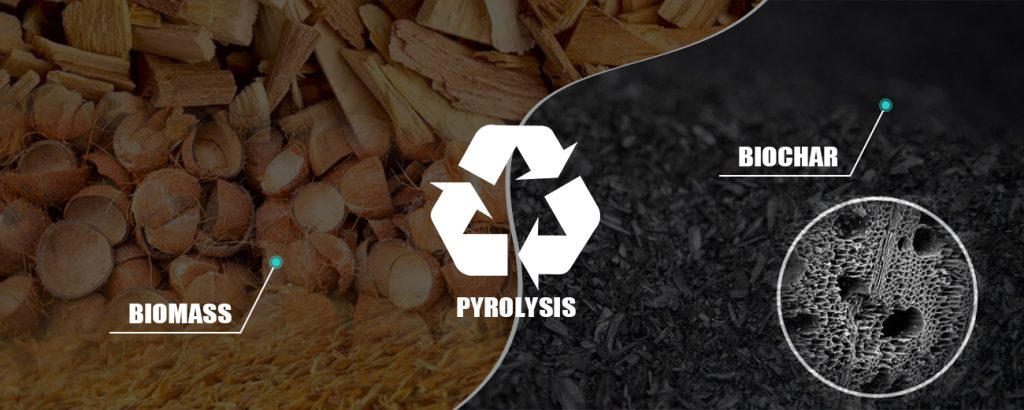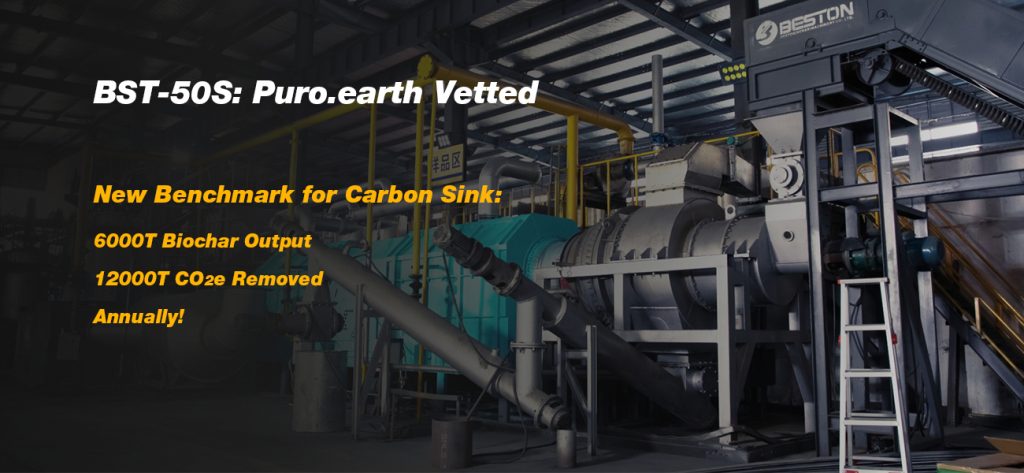The wood industry has long been a cornerstone of manufacturing, construction, and energy sectors. Yet the industry also produces enormous amounts of residues—sawdust, shavings, bark, offcuts, and waste lumber—that often end up burned or landfilled. As global industries shift toward sustainable resource management, biochar pyrolysis recycling is emerging as an efficient way to convert these waste streams into valuable, low-carbon products. By transforming wood residues into biochar, syngas, and tar through controlled thermal processes, the sector is entering a new era of circular economy and carbon-neutral operations.
Understanding The Process Of Wood-Based Biochar Production
At its core, wood pyrolysis is a thermochemical decomposition process conducted in limited-oxygen environments. Feedstocks such as sawdust, branches, or waste timber are heated to high temperatures—typically between 400°C and 700°C—to produce biochar, combustible gas, and bio-oil. Modern systems like a biomass pyrolysis plant automate these reactions with precision temperature control, continuous feeding, and gas recovery units. This makes the process more energy-efficient and environmentally friendly compared to traditional carbonization.
The resulting biochar is a stable carbon material with a porous structure ideal for soil improvement, carbon sequestration, and industrial filtration. The byproduct gases can be reused to heat the reactor itself, creating a self-sustaining cycle that minimizes energy input and emissions.

Why Wood Waste Is A Valuable Feedstock
Wood residues are abundant, renewable, and consistent in composition. These qualities make them an excellent input for biochar production. Instead of treating sawdust and wood chips as disposal problems, industries can now process them using a sawdust charcoal making machine that converts them into stable, marketable carbon products.
Biochar derived from wood typically exhibits high fixed-carbon content and a neutral to slightly alkaline pH, making it suitable for improving soil fertility and water retention. Beyond agriculture, high-grade wood biochar can also be activated and sold for wastewater treatment, odor control, or industrial catalysis.
Applications Across The Wood Industry Value Chain
Integrating biochar pyrolysis into wood industry operations offers several value-creation pathways:
- Sawmills: Transforming sawdust and bark into saleable carbon products.
- Furniture manufacturing: Recycling scrap wood into char for industrial or agricultural use.
- Plywood and panel plants: Managing offcuts and veneers through on-site pyrolysis.
- Forestry operations: Using mobile carbonization systems to handle logging residues directly in the field.
Each of these applications reduces waste management costs, generates new revenue, and improves environmental performance.
Technology Advancements Driving Efficiency
The past decade has seen remarkable improvements in pyrolysis reactor design. Continuous-feed systems now operate with automated temperature control, improved insulation, and real-time gas monitoring. Equipment such as a wood charcoal making machine delivers consistent biochar yields while recovering useful byproducts for heat or electricity generation.
This integration of thermal energy recovery allows facilities to become more energy-independent. In some configurations, the recovered syngas powers drying systems or auxiliary machinery, making the process not only carbon-efficient but also economically viable.
Environmental And Economic Advantages
Biochar production offers a dual benefit: environmental restoration and economic gain. When wood residues are converted into biochar, a large portion of their carbon content becomes fixed in a stable form, effectively removing CO₂ from the atmosphere for centuries. This contributes directly to carbon-negative operations and climate mitigation.
On the economic side, the global biochar market is projected to grow rapidly as demand for regenerative agriculture and carbon credits rises. Industries that invest early in pyrolysis infrastructure can monetize multiple outputs—biochar sales, heat recovery, and carbon offsets—while improving waste management efficiency.
Integrating Pyrolysis Into Corporate Sustainability Goals
Companies in the wood and forestry sectors increasingly view pyrolysis-based recycling as part of their ESG and circular-economy strategies. Biochar production not only cuts waste but also demonstrates measurable carbon sequestration, which can be reported under corporate sustainability disclosures.
By embedding pyrolysis systems within their production lines, companies can achieve both cost savings and reputational benefits. The result is a closed-loop model where every ton of wood processed contributes to soil restoration, cleaner air, and climate resilience.

Conclusion
The intersection of the wood industry and biochar pyrolysis technology represents a profound opportunity for sustainable transformation. From sawmills to furniture manufacturers, adopting pyrolysis systems turns waste into value, emissions into credits, and residues into renewable carbon assets. With proven technology available from industry leaders and growing policy support for carbon-negative materials, the era of wood-based biochar recycling is poised to redefine how we think about resource recovery and industrial ecology.
In short, transforming wood residues into biochar through modern pyrolysis offers not just a cleaner production pathway but a tangible contribution to a greener, circular economy for generations to come. For comprehensive details, connect with Beston Group.